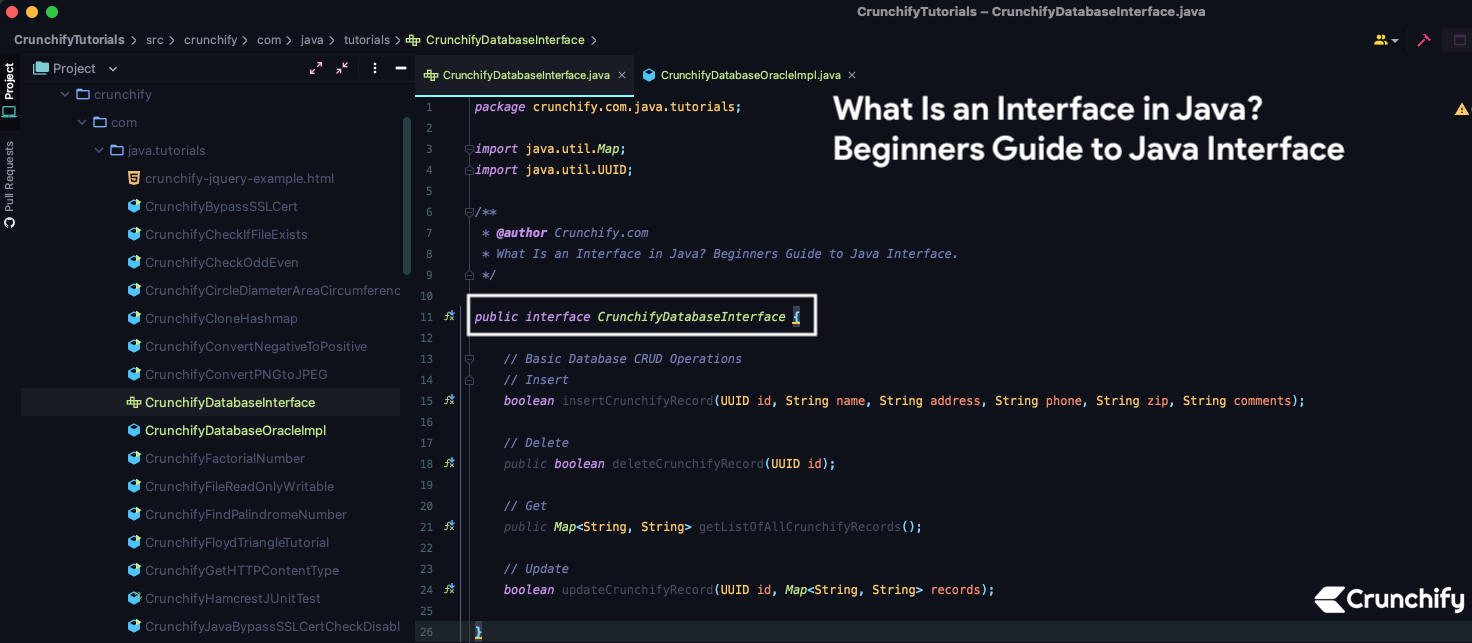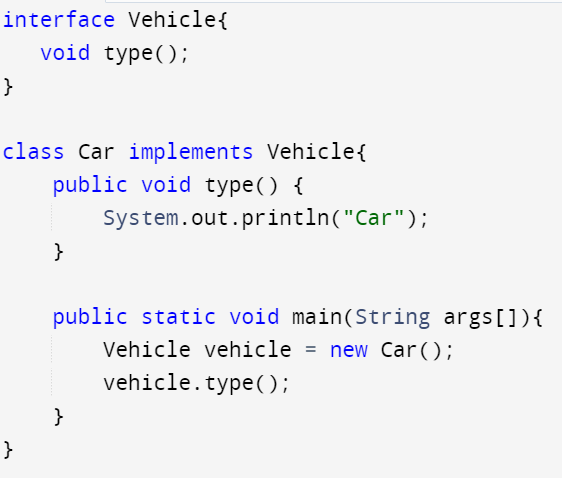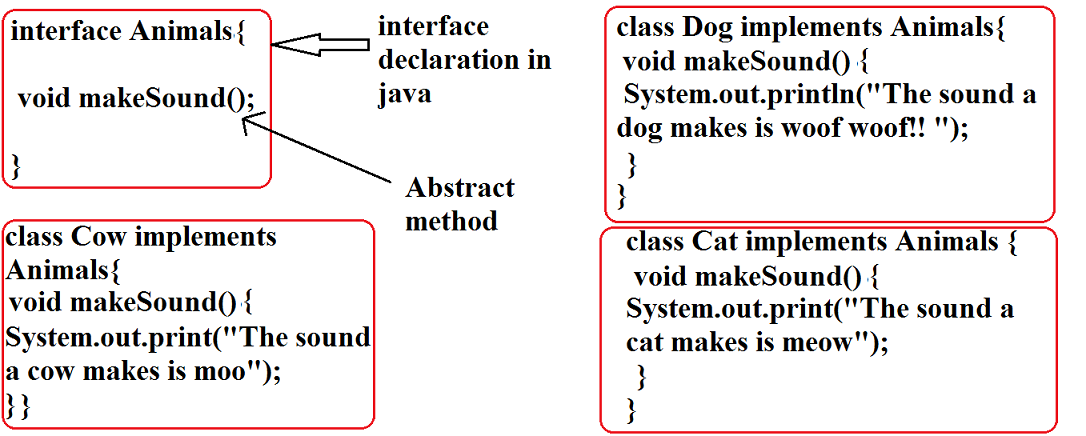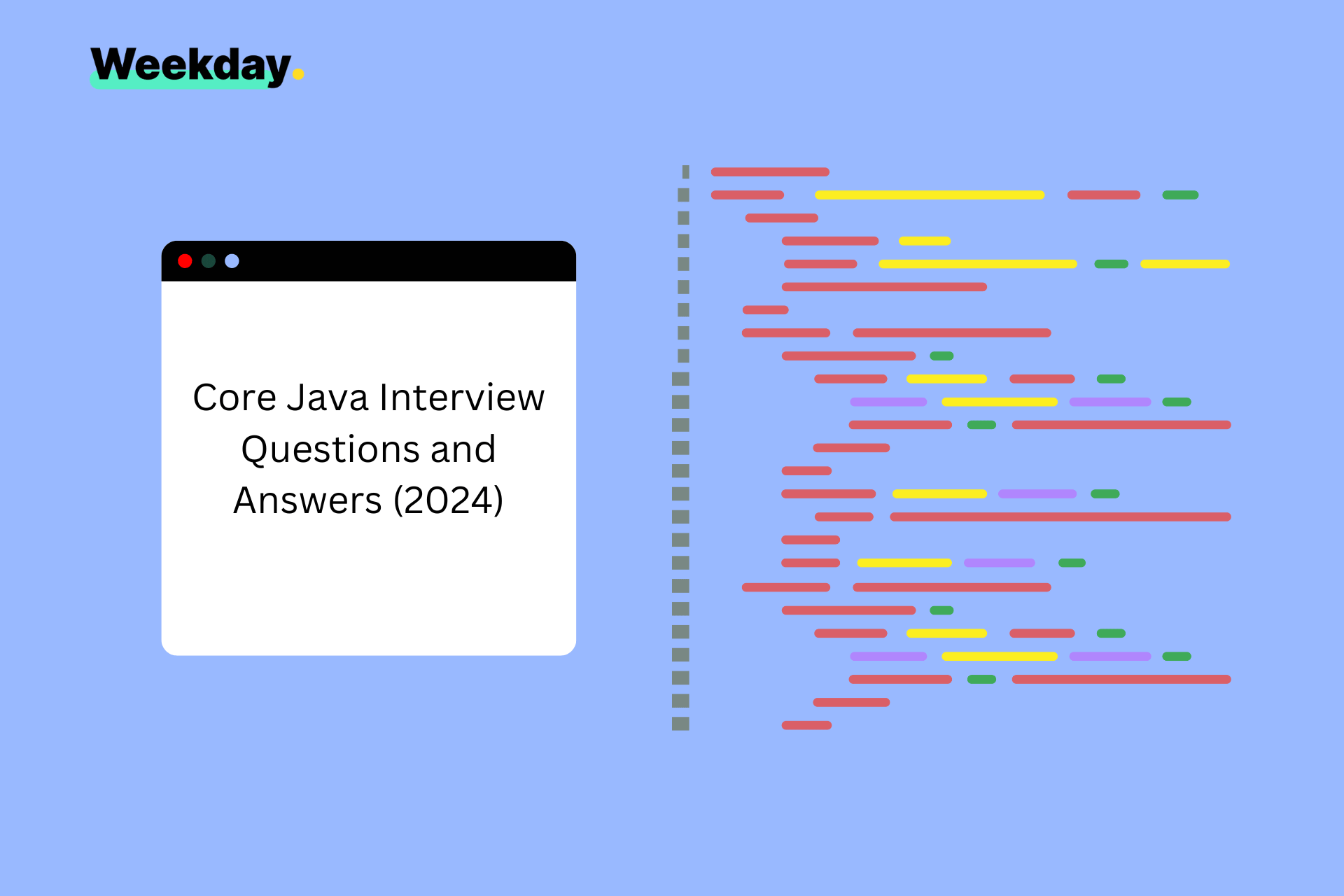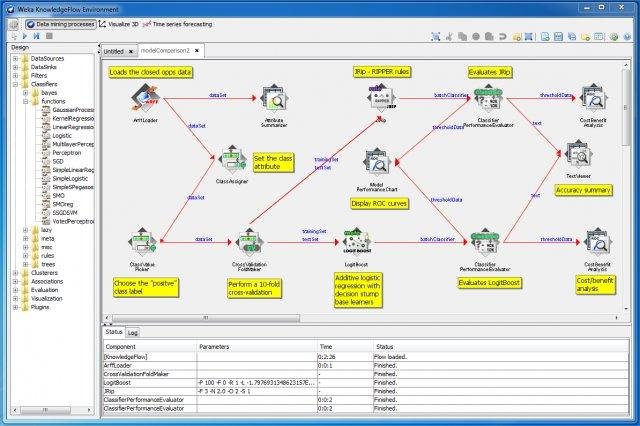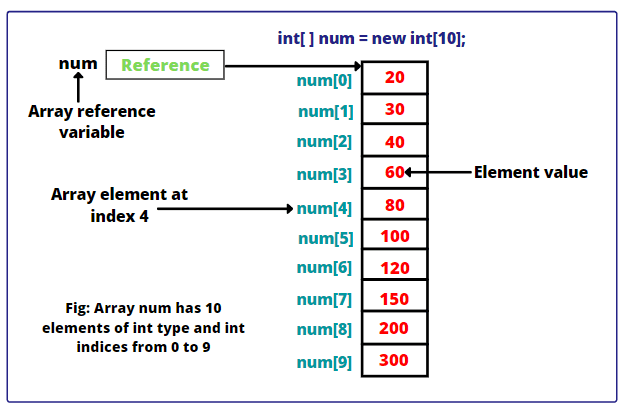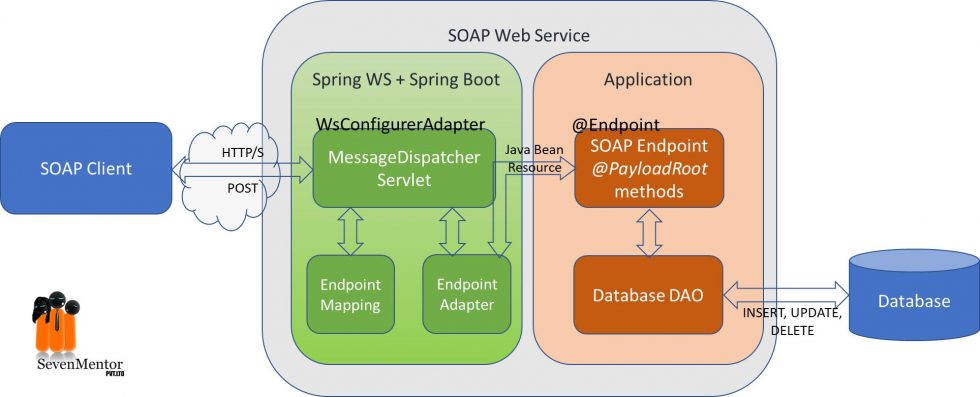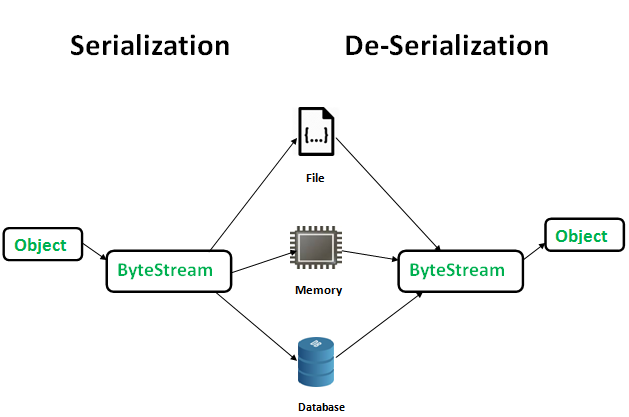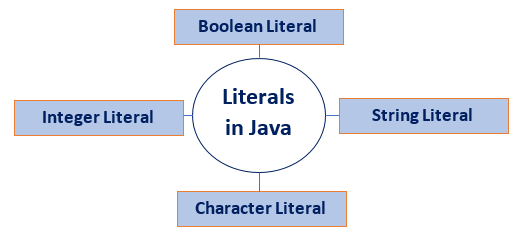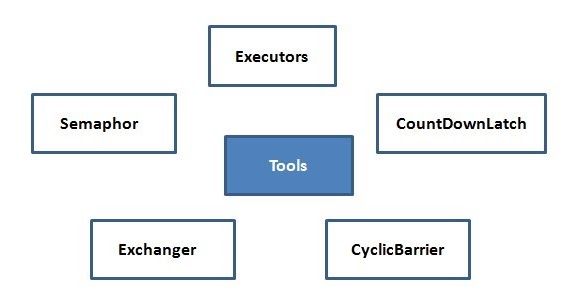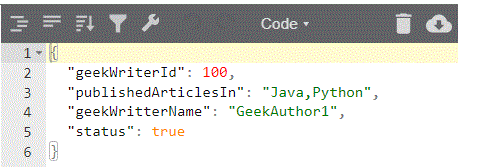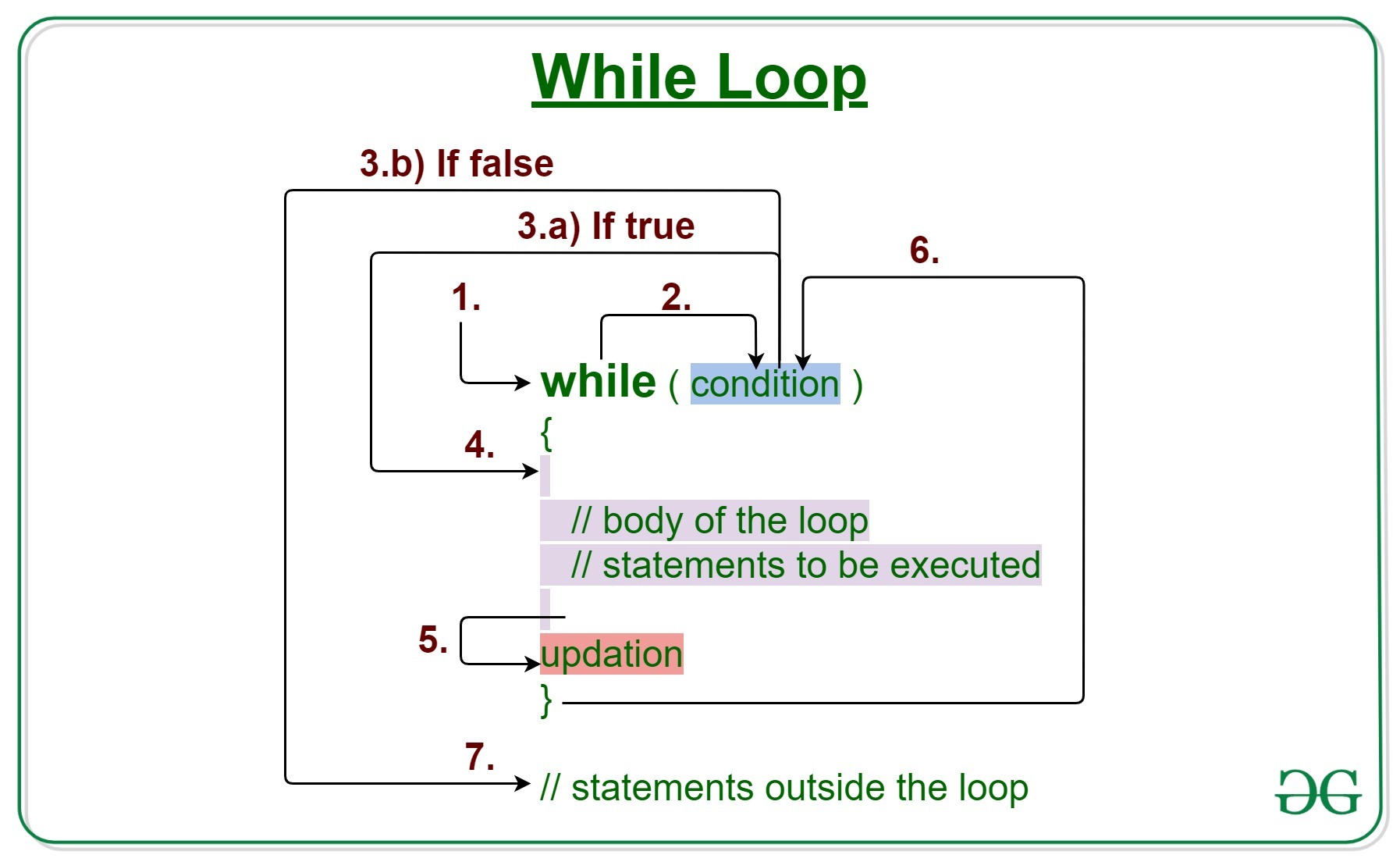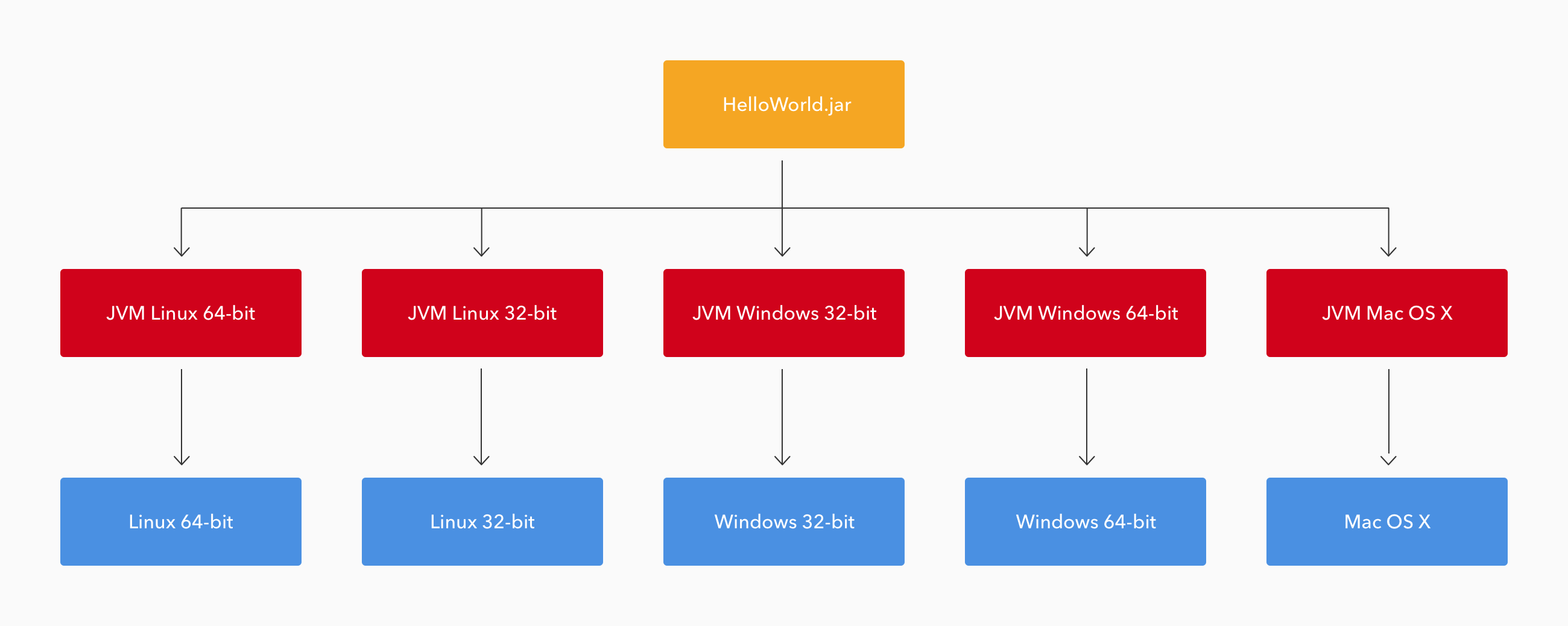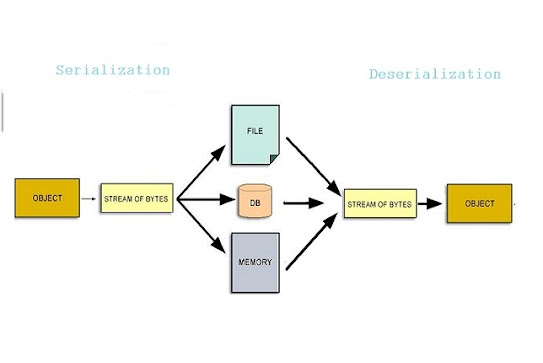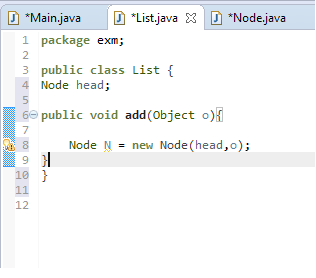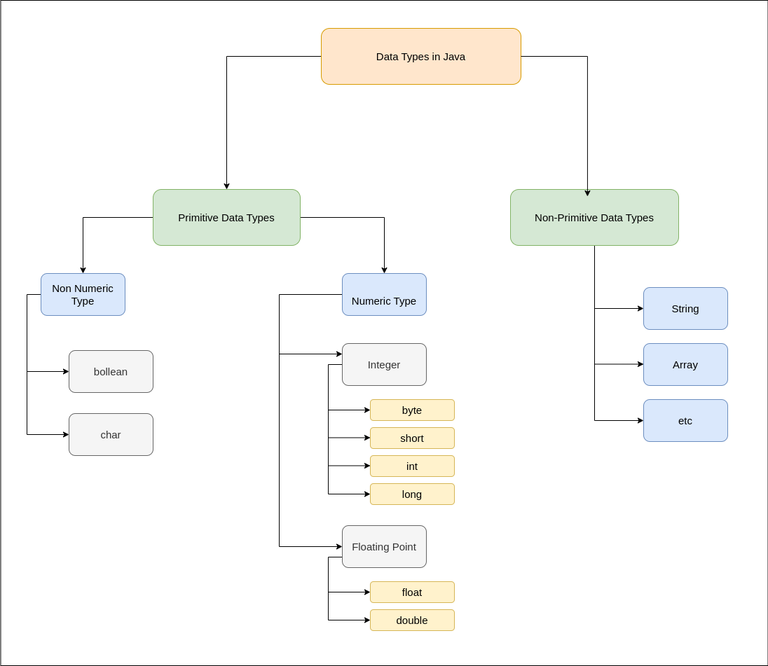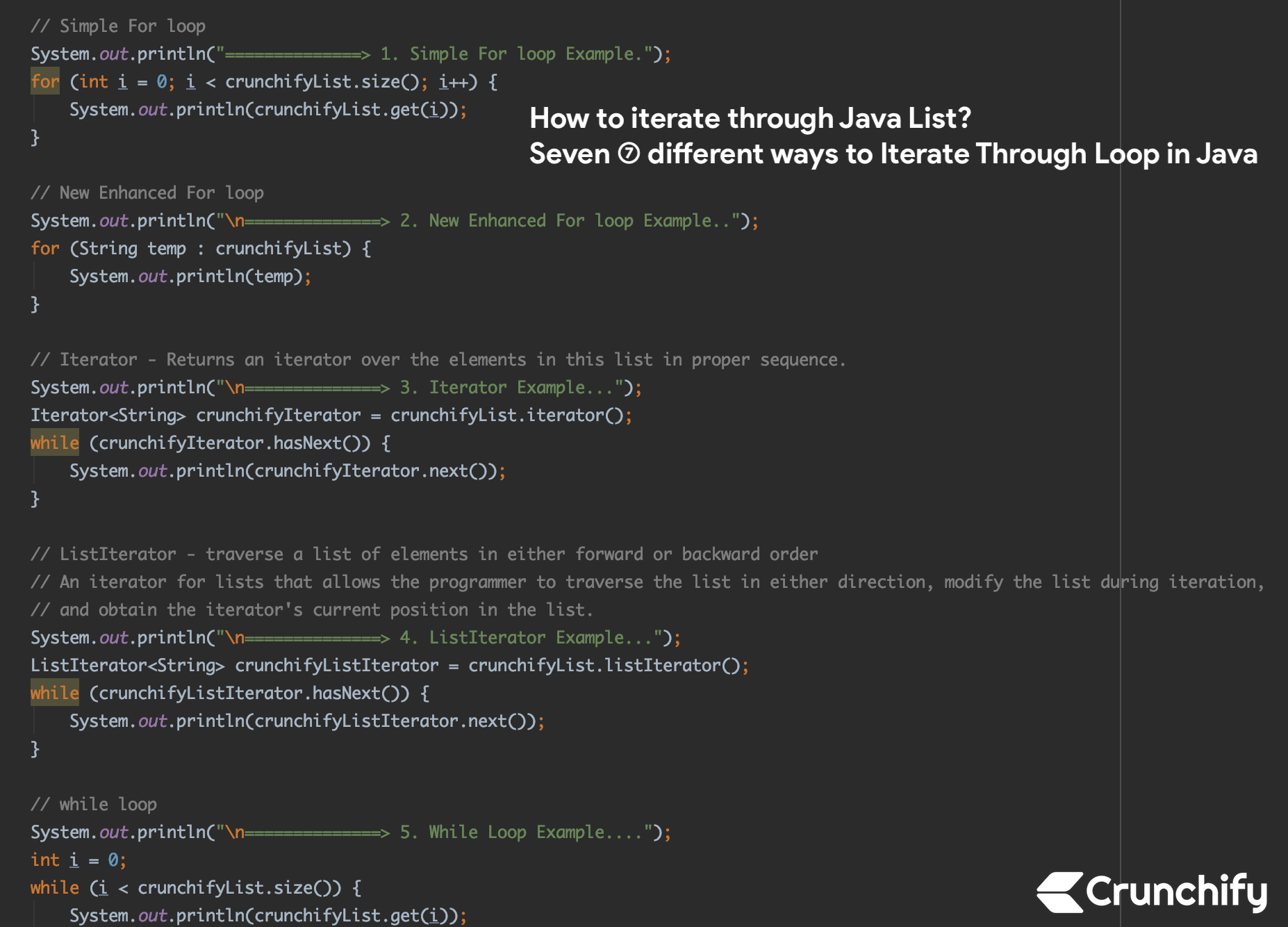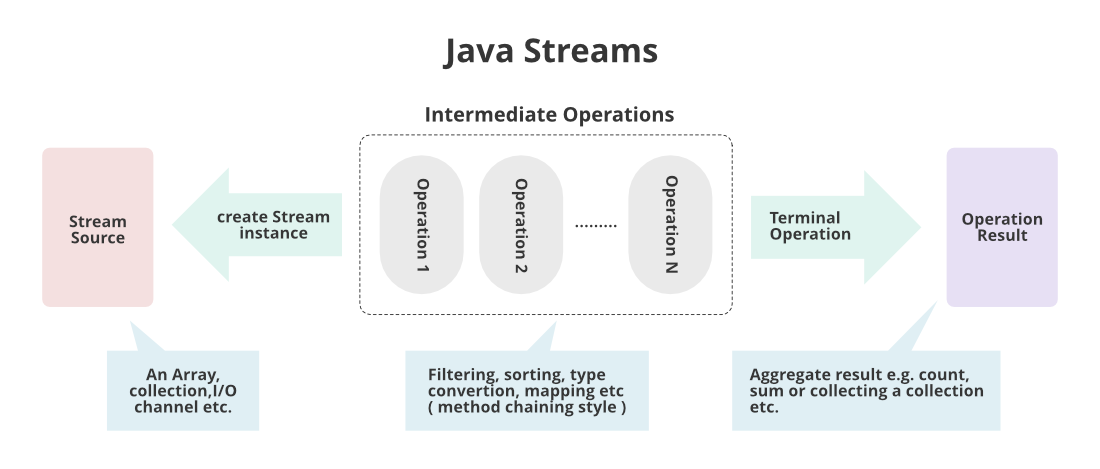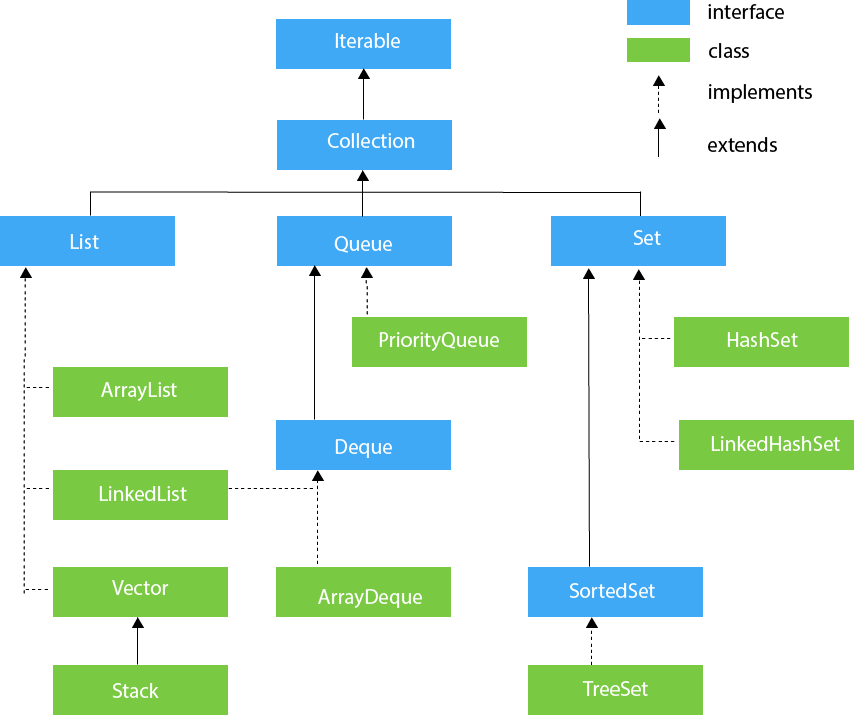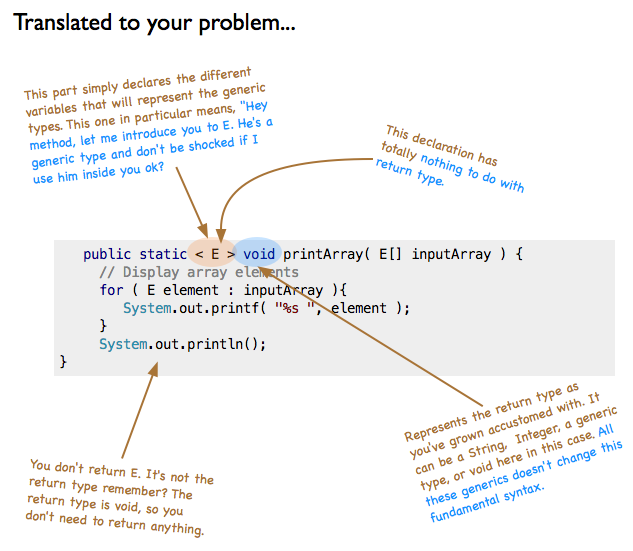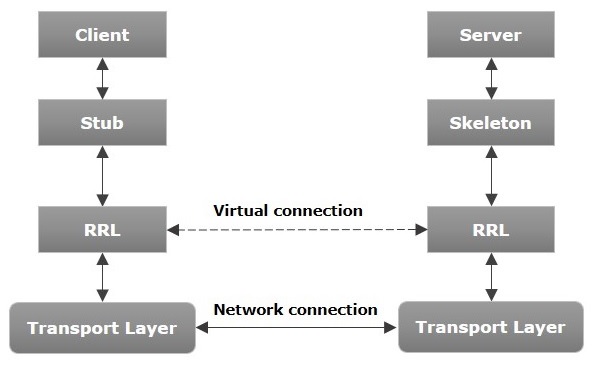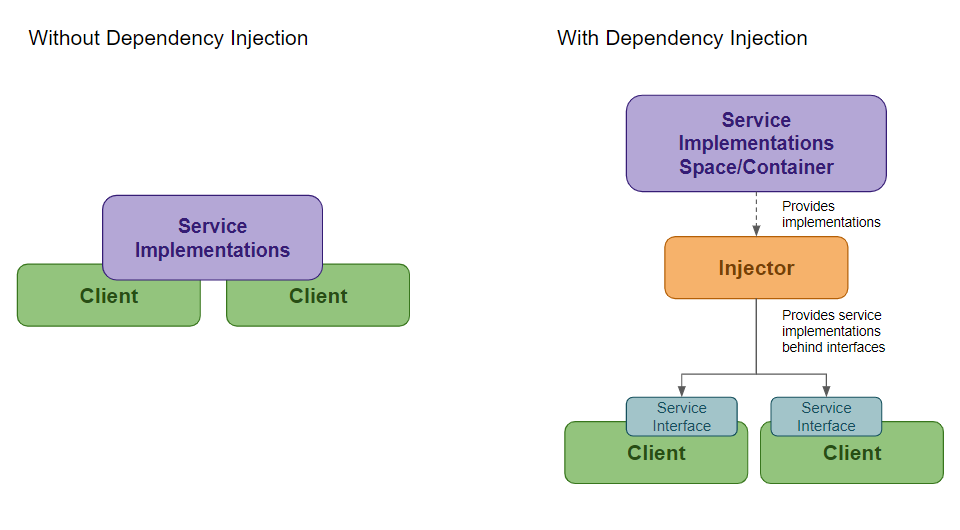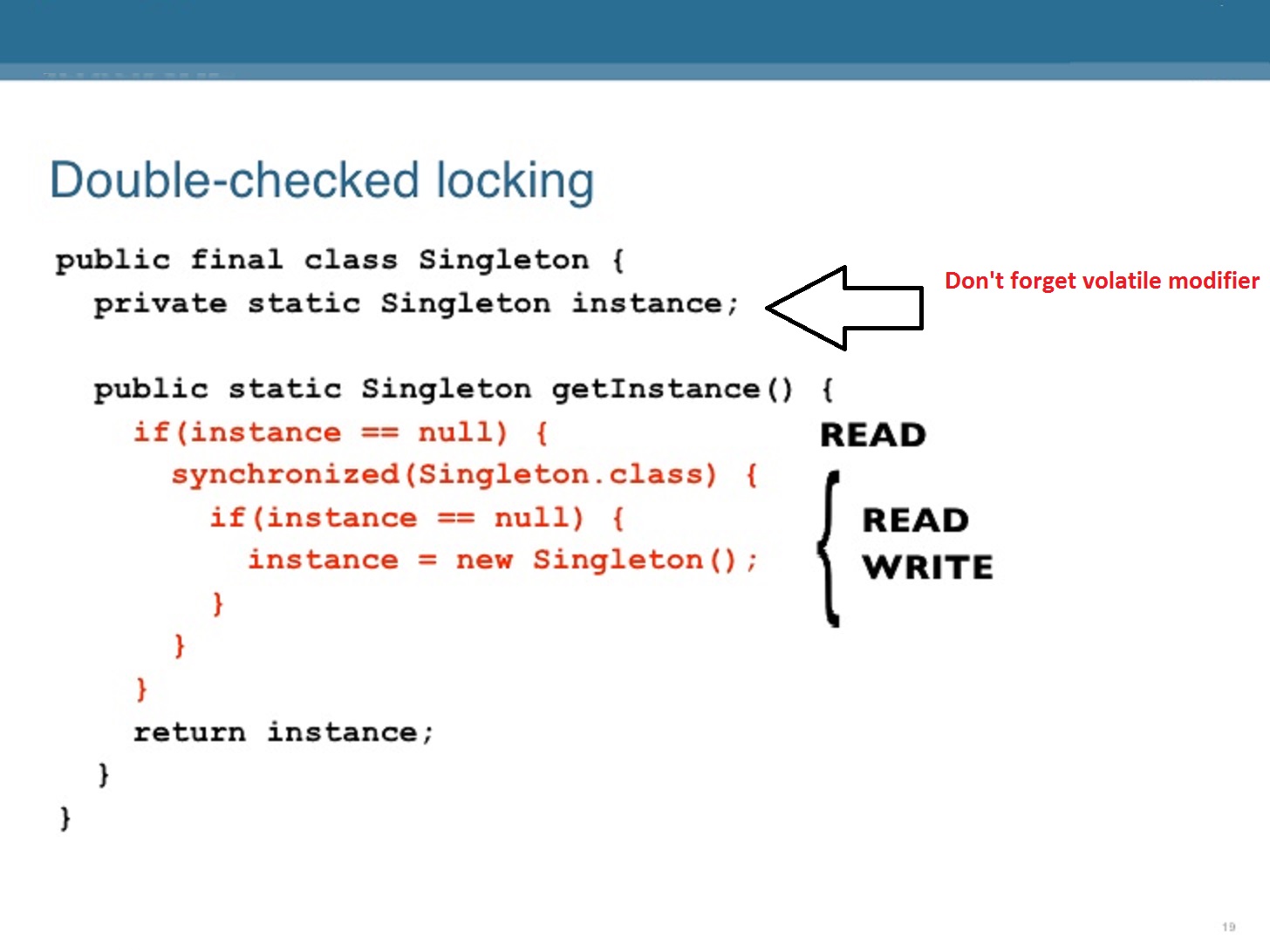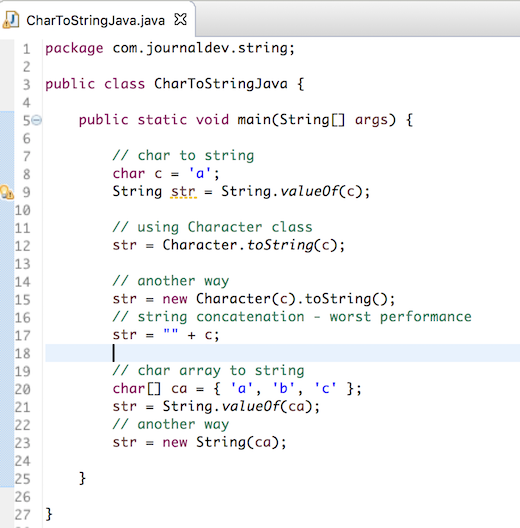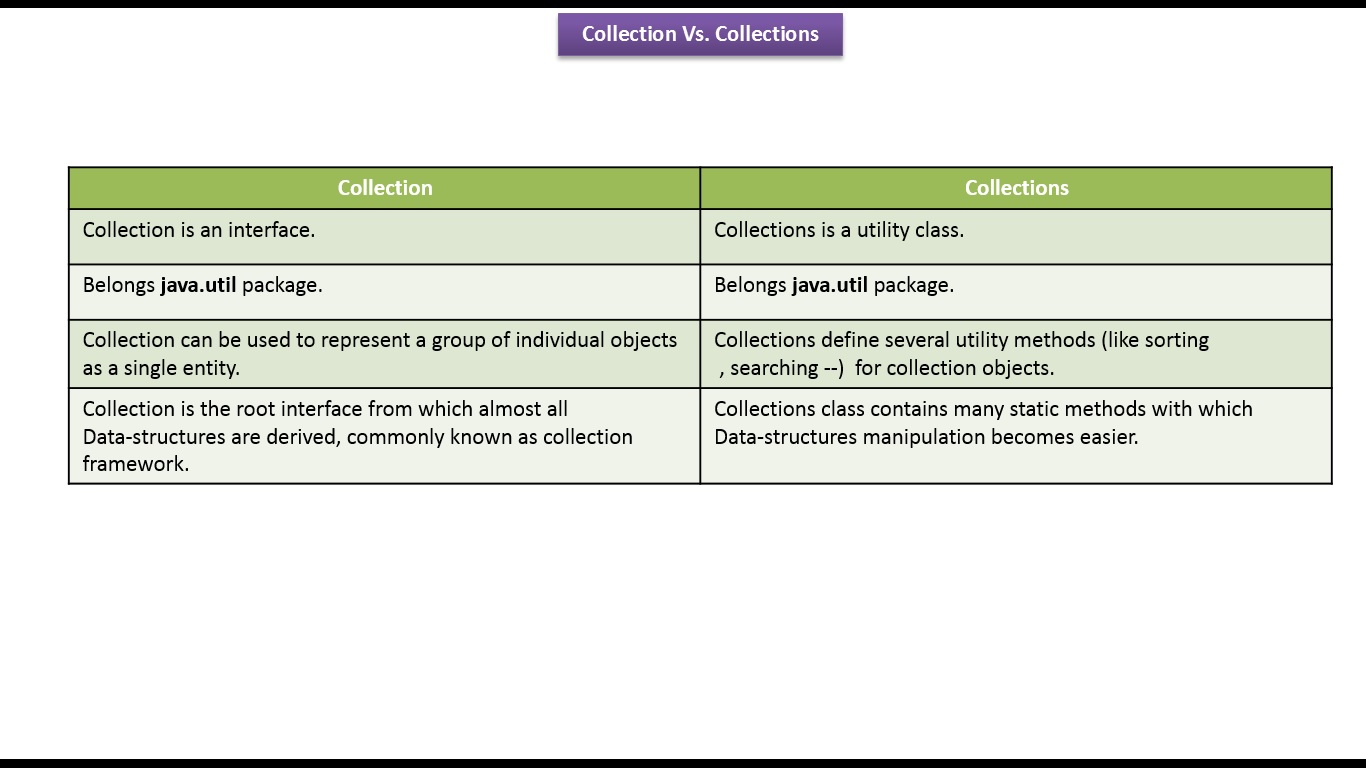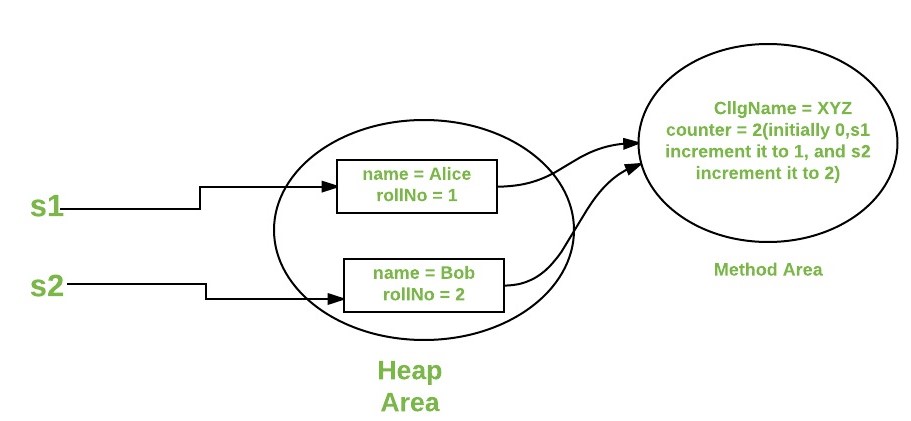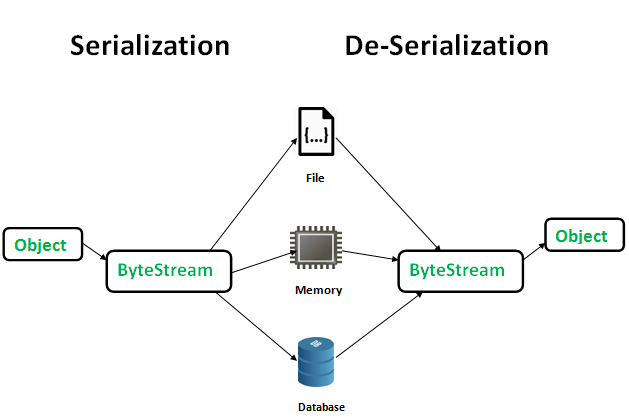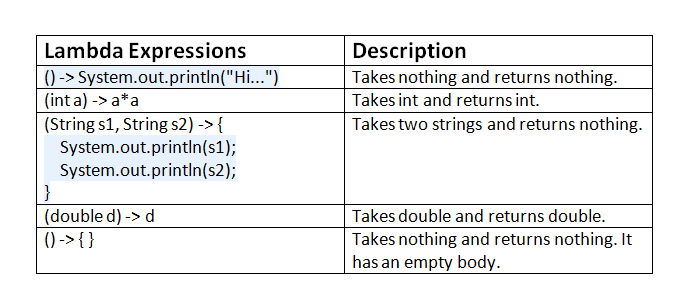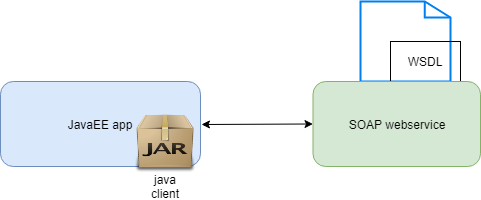interface example in java
interface example in java
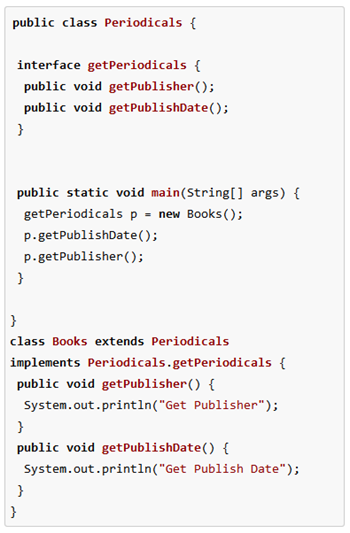
I'm happy to help! Here's an example of an interface in Java that demonstrates how you can define a method signature with no implementation, as well as several other important concepts.
public interface Vehicle {// This is the abstract method declaration,
// which means it has no implementation.
String getMake();
// This method takes an argument and returns a value.
int calculateSpeed(int speed);
// This method does not take any arguments and
// returns void, indicating that it does nothing.
default void honkHorn() {
System.out.println("Beep Beep!");
}
}
In the above code:
We define an interface namedVehicle. The getMake() method is declared but not implemented. This means you have to override it in any class that implements this interface. The calculateSpeed(int speed) method takes a single integer argument and returns an integer value. It does not necessarily have anything to do with the make or model of a vehicle, but we can call it whenever we need to calculate a speed value based on some input. The honkHorn() method is also declared in this interface, which is a good practice because even if a class implements an interface doesn't mean that every single instance of that class has to implement the default behavior. For example, you can create a new vehicle that honks its horn differently than what's provided by the Vehicle interface.
Here's how we could use this interface with a concrete class:
public class Car implements Vehicle {private String make;
private int speed;
public Car(String make) {
this.make = make;
}
@Override
public String getMake() {
return make;
}
@Override
public int calculateSpeed(int input) {
// Assuming we're calculating the speed based on some algorithm.
return (input * 2) + 30;
}
}
In this code, the Car class implements the Vehicle interface. It overrides the getMake() and calculateSpeed() methods to provide its own implementation of these behaviors.
Now let's see how we can use these classes:
public class Main {public static void main(String[] args) {
Car myCar = new Car("Toyota");
System.out.println(myCar.getMake()); // prints "Toyota"
int speed = myCar.calculateSpeed(100);
System.out.println(speed); // calculates the speed based on the input
myCar.honkHorn(); // outputs "Beep Beep!"
}
}
In this example, we create an instance of Car named myCar, then use it to print its make and calculate a new speed value. Finally, we call honkHorn() on the vehicle (which is actually implemented by the default method in the interface), which outputs "Beep Beep!".
I hope this helps you understand Java interfaces better!
use of interface in java
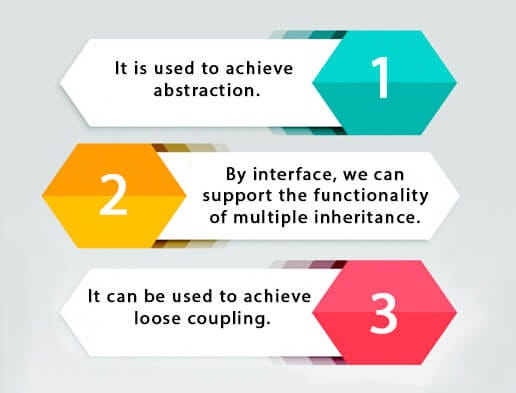
Here's a detailed explanation on how to design and implement an interface for GUI applications using Java:
What is an Interface?
An interface in Java is a blueprint for objects that define a contract by listing the methods that must be implemented by any class that implements it. In other words, an interface defines a set of abstract methods that can be inherited by classes, but does not provide any implementation.
Why Use Interfaces?
There are several reasons why interfaces are useful in Java programming:
Abstraction: An interface provides a way to define a contract without providing the implementation, which helps to keep the code organized and modular. Multiple Inheritance: In Java, a class can only inherit from one parent class using inheritance. However, with interfaces, you can achieve multiple inheritance by implementing multiple interfaces in your class. Polymorphism: Interfaces provide a way to implement polymorphic behavior, where objects of different classes can be treated as if they were of the same type.Implementing an Interface for GUI Applications
To create an interface for GUI applications using Java, you would typically define an abstract method that outlines the behavior required by any class that implements it. For example, let's say we want to create a simple button that performs some action when clicked. We could create an interface like this:
public interface Button {void performAction();
}
Now, any class that wants to implement this behavior would need to provide their own implementation for the performAction() method:
public class MyButton implements Button {@Override
public void performAction() {
// Code specific to your button's action goes here
}
}
GUI Components and Interfaces
In a GUI application, you might have various components like buttons, text fields, labels, etc. Each of these components would need to implement some common behavior, such as handling user input or performing actions when certain events occur. In this case, you could create an interface for the component that defines the methods required for each type of component.
For example, if we have a button and a text field that both handle mouse clicks differently, we could define a ClickHandler interface:
public interface ClickHandler {void onClick();
}
Then, you would implement this interface in your custom components like so:
public class MyButton implements ClickHandler {@Override
public void onClick() {
// Code specific to button click behavior goes here
}
}
public class MyTextField implements ClickHandler {
@Override
public void onClick() {
// Code specific to text field click behavior goes here
}
}
This way, you can treat these components as if they were of the same type, even though they are different in terms of their behavior and functionality.
In Conclusion
Interfaces are a fundamental concept in Java programming that provide a powerful tool for abstracting away implementation details while defining a contract that must be implemented by any class that implements it. By using interfaces to define common behaviors for GUI components, you can write code that is more modular, maintainable, and scalable.
I hope this explanation helps!
